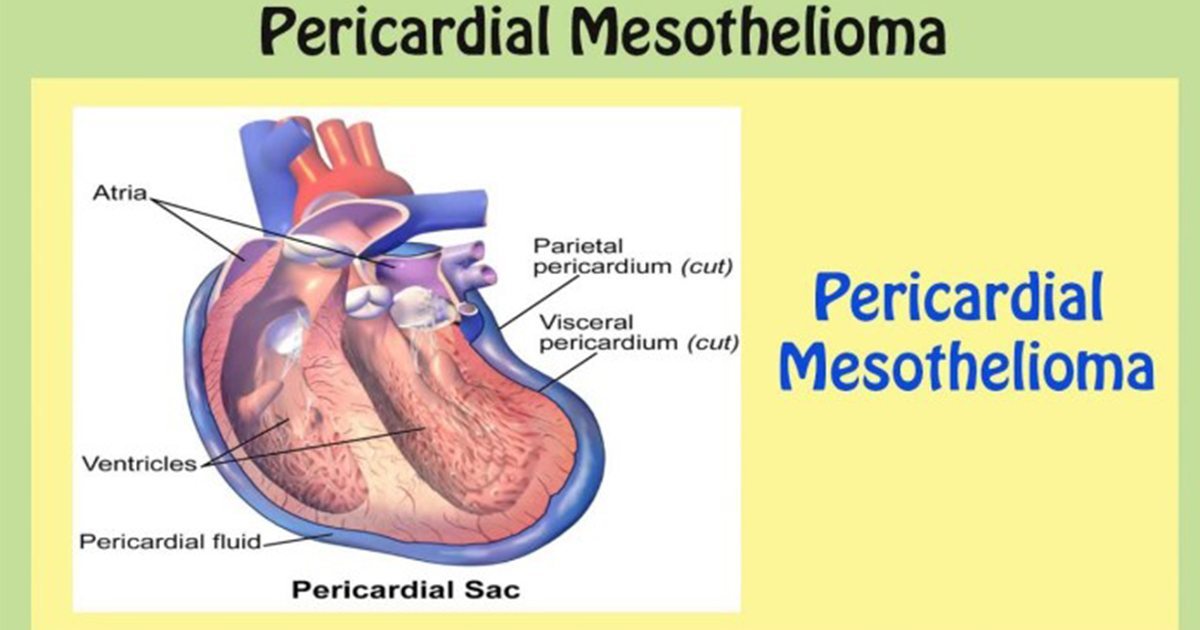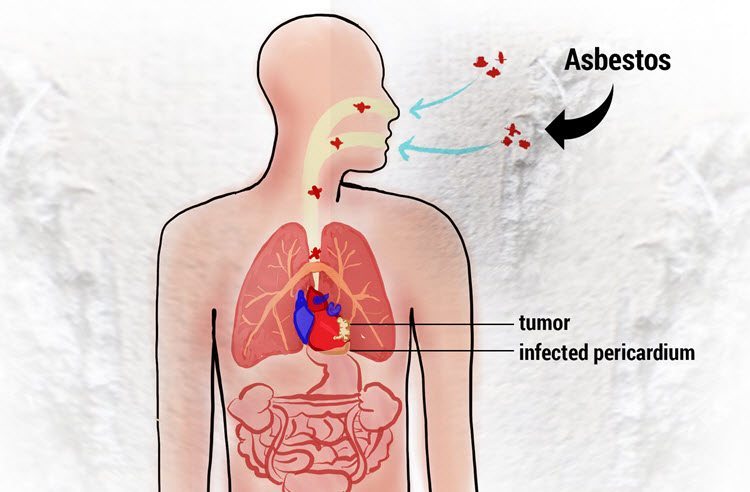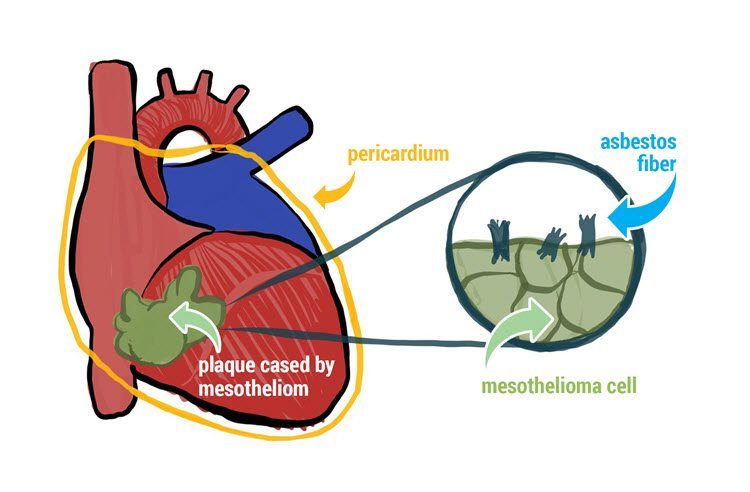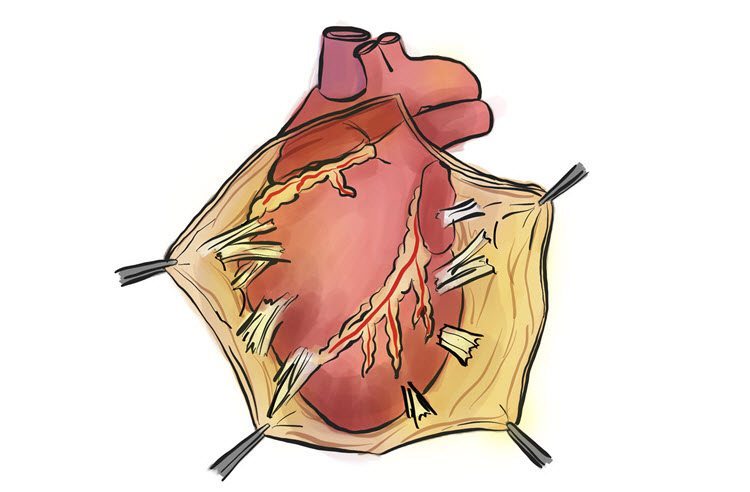What Is Pericardial Mesothelioma?

Pericardial mesothelioma is a deadly cancer that attacks the tissue lining the heart, which is known as the pericardium.
This type of mesothelioma is very rare, accounting for less than 1 percent of malignant mesothelioma cases, according to research published in the International Journal of Cancer Research and Treatment.
The more common types of this cancer are pleural mesothelioma, found in the chest cavity and the lining of the lung, peritoneal mesothelioma, found in the abdominal cavity, and testicular mesothelioma, found in male testicles.
What is the main cause of pericardial mesothelioma?
The only known Cause of Pericardial Mesothelioma is exposure to asbestos, a naturally occurring mineral that has been used in common household and industrial building products for decades.

Although asbestos has been clearly identified as the only known cause of pericardial and other types of mesothelioma, it is still not completely banned in the United States.
Unfortunately, exposure to asbestos is still a real threat in New York City, New York State and throughout the Tri-state area.
Many people work in occupations that frequently expose them to asbestos. Construction workers, electricians, industrial workers, mechanics, shipbuilders and veterans in New York and throughout the United States are more often exposed to asbestos, therefore making them most at risk for developing asbestos-related diseases such as mesothelioma pericardial.
However, asbestos has also been shown to cause mesothelioma in people with limited exposure, including family members of those working with asbestos who bring home microscopic fibers on their clothing or uniforms. It is important to know that there is no safe level of asbestos exposure.
How does pericardial mesothelioma develop?
When people come into contact with asbestos — either by directly handling materials that contain asbestos or by just being in an area where materials that contain asbestos are being worked on — they can inhale or ingest microscopic asbestos fibers.
These dangerous fibers can get stuck in the tissues that line the chest cavity, the lungs, the abdominal cavity and organs, and the heart.

When asbestos fibers find their way to the pericardium lining the heart, they can lodge in the tissue and stay in the body for decades before mesothelioma pericardial develops.
In fact, researchers have warned that it can take 15 to 60 years for mesothelioma pericardial to develop.
What are the common symptoms?
Pericardial mesothelioma symptoms are often insidious and may be confused with other heart or chest problems. Symptoms may include:
- Chest pains
- Heart palpitations
- Difficulty breathing
- Constant and acute cough
- Fluid in the pericardial space
- Fever and night sweats
- Paradoxical pulse
- Weight loss
- Generalized weakness
Because mesothelioma pericardial symptoms can mimic those of other health issues, doctors may not make a pericardial mesothelioma diagnosis right away.
In the time it takes to properly identify the cancer, the disease can spread aggressively, and the number of effective treatment options can dwindle.
That’s why it’s so important for patients experiencing these types of symptoms to disclose any history they’ve had with asbestos exposure immediately and discuss it with their physicians.
How is the diagnosis made?
For patients experiencing mesothelioma pericardial symptoms, the doctor will typically start with a physical exam and inquire about a patient’s history.
It is imperative for patients to explain their history of exposure to asbestos, as that can help the doctor decide on the next steps to take.
The sooner the doctor can make mesothelioma pericardial diagnosis, the better.
Physicians may order the following tests to make a mesothelioma pericardial diagnosis:

- Echocardiogram: Doctors will frequently order this test, which uses sound waves to examine the heart, to determine whether a patient has fluid around the heart (also known as pericardial effusion). An echocardiogram can also give the doctor an idea of how well the heart is working.
- X-ray, CT scan or MRI: These diagnostic imaging tests are often used to identify tumors and the location of the cancer. However, their results are not detailed enough to diagnosis a mass as mesothelioma pericardial.
- Pericardiocentesis: This procedure uses a needle to remove fluid from the sac around the heart. Tests of this fluid can determine whether it contains cancer cells. Additional tests may be able to identify the cancer as mesothelioma pericardial. However, these tests are not definitive.
- Pericardioscopy: In this procedure, the doctor makes a small incision in the skin over the heart and inserts a tube with a camera on it to examine the tissues surrounding the heart. During a pericardioscopy, the doctor can take tissue samples for biopsies.
What are the treatment options available?
Mesothelioma Pericardial tumors can be benign or malignant; however, most cases are not diagnosed early enough for treatment to be considered curative (aimed at killing the cancer cells and preventing further growth).
Still, there are pericardial treatment options that may extend the patient’s life or provide pain relief. These types of treatments are referred to as palliative.
Pericardial mesothelioma treatment options include:
- Pericardiectomy
Also known as pericardial stripping, this surgery aims to remove all or a portion of the pericardium. Although the pericardium is there naturally to protect the heart, it is not essential for normal heart function. If the cancerous pericardium is not removed, patients survive only an average of six months. - Chemotherapy
This is a standard treatment for many types of cancers. Although it will not eradicate mesothelioma pericardial, it may slow the progression of the disease and reduce symptoms. - Clinical trials
Patients may choose to explore clinical trials as potential treatments for pericardial mesothelioma. Advances in medicine are being made all the time, so patients should work with their doctors to explore their treatment options.
What is the prognosis and life expectancy for patients with pericardial mesothelioma?
The American Cancer Society estimates the median survival time for mesothelioma in general can range from 12 to 21 months, depending on how early the cancer is diagnosed.
However, a report in the Heart medical journal estimated survival time after a mesothelioma pericardial diagnosis to be six weeks to 15 months.
The prognosis may also depend on a person’s health, age, gender and the type of cancer cells detected.
If you are facing a pericardial mesothelioma diagnosis, we encourage you to rely on our support community of medical experts, patients, caregivers and advocates here to help you and your loved ones through this difficult journey.
Sources & Author:
- American Cancer Society: How Is Malignant Mesothelioma Diagnosed?
- American Cancer Society: Survival statistics for mesothelioma
- Heart: Primary pericardial mesothelioma presenting as pericardial constriction: a case report
- International Journal of Cancer Research and Treatment
- OSHA Fact Sheet: Asbestos
